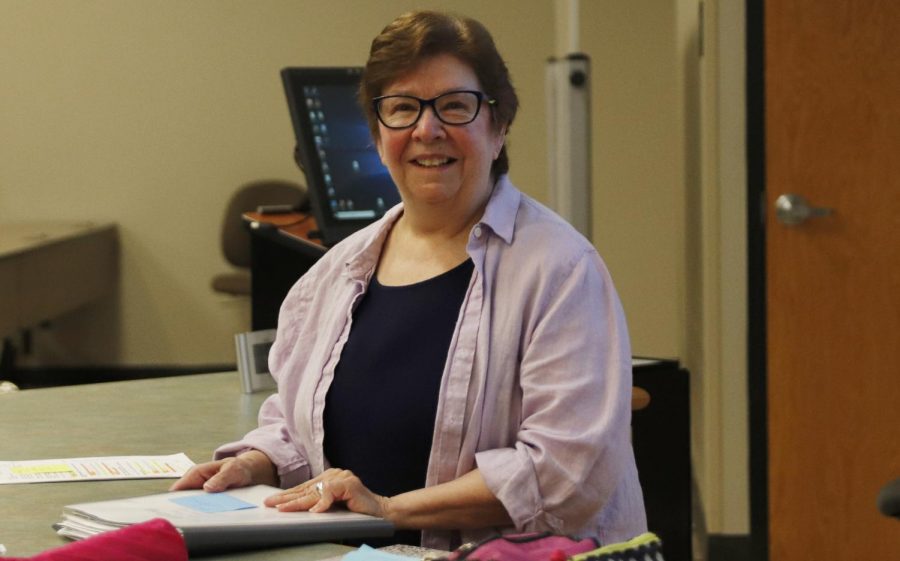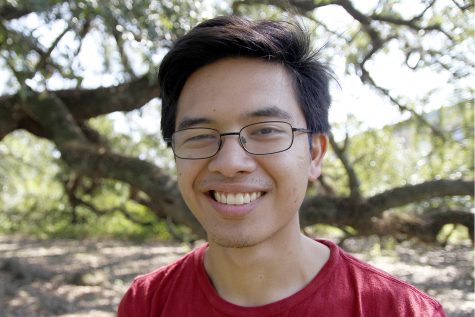18 years at the lectern: the history of an art historian
Dr. Irene Nero, associate professor of history, feels that her research and teaching compliment each other.
October 2, 2018
When Dr. Irene Nero, associate professor of art history, joined the university in 2000, she focused on finishing her dissertation and building the university’s art history field.
Since her arrival, Nero worked with Timothy Silva, an instructor of art history, to build art history at the university.
“I wanted to make it better than it was, and it was not easy to do, but it’s been a lot of fun to do,” said Nero. “I like to see things grow. When we started building this and turning it into a concentration, we have now been able to get 13 students into grad school in this program since 2008.”
Eight years after joining the university, Nero coordinated with Eric Johnson, director of Sims Memorial Library, to create and build the “Let’s Talk: Art” lecture series. She incorporated the art history concentration by having students present in the series.
Nero earned her undergraduate degree from the University of New Orleans and continued her education at Florida State University. Since then, she traveled around the country and taught in Europe before returning to Louisiana.
“All the while I lived in New Orleans, I heard of Hammond, but I didn’t know what it looked like whatsoever,” said Nero. “Then when I got out of my PhD program, I was looking for jobs, and I was thinking, ‘I’d really like to go back to Louisiana.’”
When Nero started her undergraduate years, she planned to pursue interior design, but introduction to a required art history class changed her mind.
Nero said, “I was looking at the screen, and the teacher, wonderful, marvelous human being, had images of early Renaissance paintings up on the screen, and all of a sudden, I realized, ‘Oh, my gosh, this is what I want to teach.’ It was an epiphany. It was an absolute light bulb moment. I had always liked interior design and the history of interior design, but I didn’t realize it translated over to art.”
Nero shared what she enjoys about her field.
“I like the history of beautiful artifacts and the idea that human beings made these things throughout different time periods, and they made them with whatever was available to them,” said Nero. “To me, it’s so humanly rich to be able to study that, their thought processes, their feelings, their culture backgrounds, the difference of ideas of beauty from one culture to another. I find it so rich, and it’s never-ending.”
Though the balance between research and teaching can be challenging, Nero sees it as the best of both worlds.
“Research is absolutely exciting because I’m always looking for some new approach or some new idea,” said Nero. “I am constantly researching what other people have written that I have an interest in to see if I there’s something I can launch from or change or learn from, and I use it in my classroom. Research is not just for me to publish, but research for me to use for teaching, and I thrive on research.”
When not teaching or conducting research, Nero spends her free time either reading or going to flea markets and antique stores.
Nero discussed how art of the past can remain fresh after years of study.
“People say all the time, ‘I don’t know why you study that,’” said Nero. “’Everything’s been written.’ No, not even close. I can stand in front of a classroom with pictures, and I can tell you on any given day 13 things on that day that nobody has ever written about.”











Nikki M. • Jul 30, 2019 at 2:31 pm
Dr. Nero was my mentor before graduating in 2008 as one of the first students through the concentration program. My calling to art history is very similar to hers – she was the marvelous human being at the front of the room who opened my world to art history. After taking a few years off from academia, I’m now in my third semester working towards a masters degree in art history with aspirations of teaching at the collegiate level. Thank you, Dr. Nero – for your guidance, honesty, and passion. You are such a treasure!